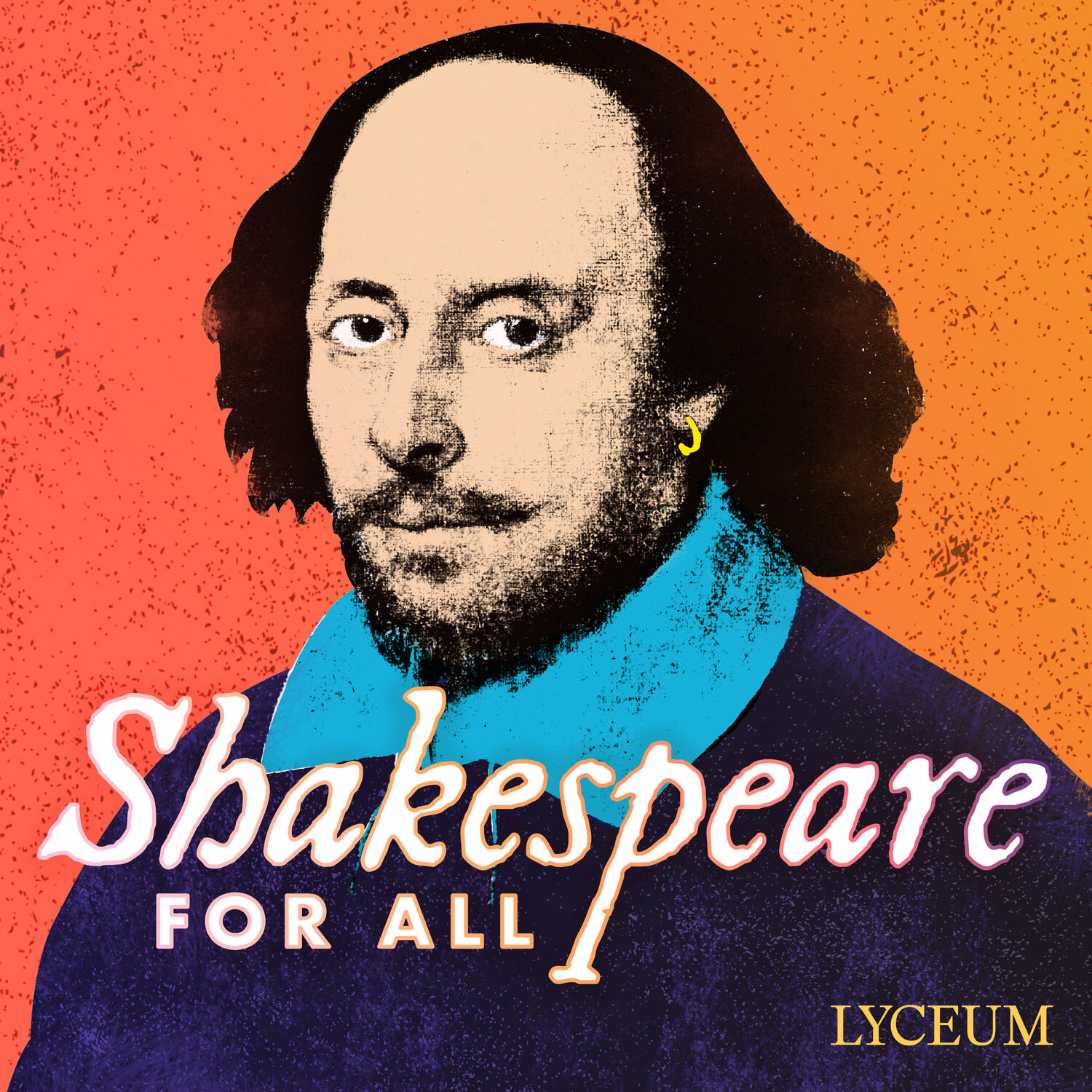Shakespeare’s Sonnets
“TWO LOVES I HAVE”
What You'll Learn
The form and history of the sonnet
The unusual way Shakespeare structured his sonnet sequence
How early modern concepts of gender, sexual identity, and race shape the sonnets
Course Outline
Episode 1: Discussion of the sonnet’s form & history and overview of Shakespeare’s sonnet sequence
Episode 2: Exploration of gender, sexual identity, and race in relation to Shakespeare’s sonnets
Episode 3: Actors’ recordings of sonnets & close-reading of the sonnets, along with general techniques for analyzing any sonnet
Further Resources on Shakespeare’s Sonnets
Scott Newstok, Professor of English and Director of the Pearce Shakespeare Endowment at Rhodes College, author of How to Think Like Shakespeare: Lessons from a Renaissance Education, and featured interviewee in our Blog For All, has created a number of resources for teaching and learning more about Shakespeare’s sonnets.
Works Consulted for this Course
Cheney, Patrick, ed. The Cambridge Companion to Shakespeare’s Poetry. Cambridge: Cambridge University Press, 2007.
Cohen, Water. “Introduction,” The Sonnets, in Shakespeare, William. The Norton Shakespeare. Edited by Stephen Greenblatt, Walter Cohen, Suzanne Gossett, Jean E. Howard, Katharine Eisaman Maus and Gordon McMullan. 3rd ed. New York: W. W. Norton & Company, 2016.
Dobson, Michael, and Stanley Wells, Will Sharpe, Erin Sullivan, eds. The Oxford Companion to Shakespeare, second edition. Oxford: Oxford University Press, 2015.
Hall, Kim F. “‘These bastard signs of fair’: Literary Whiteness in Shakespeare's Sonnets,” in Loomba, Ania, and Martin Orkin, eds. Post-Colonial Shakespeares. New York: Routledge, 2004 (first published 1998).
Hall, Kim F. Things of Darkness: Economies of Race and Gender in Early Modern England. Ithaca: Cornell University Press, 1995.
Magnusson, Lynn. “Shakespeare’s Sonnets: A Modern Perspective.” Folger Shakespeare Library. <https://shakespeare.folger.edu/shakespeares-works/shakespeares-sonnets/shakespeares-sonnets-a-modern-perspective/>
Schiffer, James, ed. Shakespeare's Sonnets: Critical Essays. New York: Routledge, 2013.
Schoenfeldt, Michael, ed. A Companion to Shakespeare’s Sonnets. Chichester, Blackwell Publishing, 2010.
Shakespeare, William. The Complete Sonnets and Poems. Edited by Colin Burrow. The Oxford Shakespeare. Oxford: Oxford University Press, 2002.
Shakespeare, William. Shakespeare’s Sonnets and Poems. Edited by Barbara A. Mowat and Paul Werstine. Folger Shakespeare Library. New York: Washington Square Press, 2004.
Shakespeare, William. Shakespeare’s Sonnets. Edited by Katherine Duncan-Jones. The Arden Shakespeare. London: A & C Black Publishers Ltd, 2010.
TIDE: Travel, Transculturality, and Identity in England, c. 1550-1700: Keywords. <http://www.tideproject.uk/keywords-home/>
Vendler, Helen. The Art of Shakespeare’s Sonnets. Cambridge: Harvard University Press, 1999.
The sonnet — a 14-line poem with a strict rhyme scheme, conventionally associated with love — was one of the most popular poetic forms in late Elizabethan England. In 1609, Shakespeare published a sequence of 154 sonnets that radically reimagined the question of what love can mean, including the question of who one might desire and what the experience of desire might be like. In the course, you’ll learn about the structure and history of the sonnet, hear individual sonnets of Shakespeare’s performed and analyzed by world-class actors and literary scholars, and discover how gender, status, and race intersect to shape this sonnet sequence.
In Part 1, you’ll be guided through a history and overview of Shakespeare’s sonnet sequence with commentary by Michael Schoenfeldt, John R. Knott, Jr. Collegiate Professor of English at the University of Michigan, Ann Arbor. You’ll learn about the sonnet form and how it came to England from Renaissance Italy, what attracted Shakespeare to this form, and what attracted audiences to Shakespeare’s poetry. You’ll also discover the literary mysteries surrounding the sonnets that have intrigued readers for centuries, and how Shakespeare took this traditional form in unexpected directions.
Part 2 focuses closely on the two major “characters” to whom the sonnets are addressed: a beautiful young man, and a woman described as black. You’ll learn how the speaker represents his relationship to these figures and his desire for them, and what significance those relationships might have had in Shakespeare’s culture, as Professor Schoenfeldt discusses sexual identity and race in early modern England.
Part 3 starts with a discussion of general reading strategies to help you discover the poetic techniques and insights of any individual sonnet. It concludes with a close-reading of three sonnets that show the extraordinary range of tone, emotion, and perspective in Shakespeare’s poems.
Sonnets and Performers in Episode 3
Sonnet 29, “When in disgrace with fortune and men’s eyes” (Ashley Byam)
Sonnet 18, “Shall I compare thee to a summer’s day?” (Jeff Cornell)
Sonnet 116, “Let me not to the marriage of true minds” (Amanda Harris)
Sonnet 129, “Th’ expense of spirit in a waste of shame” (Amanda Harris)
Sonnets Included in Episode 2
Sonnet 20, “A woman’s face with Nature’s own hand painted” (Ashley Byam)
Sonnet 147, “My love is as a fever, longing still” (Jeff Cornell)
Course Instructor
Michael Schoenfeldt
John R. Knott, Jr. Collegiate Professor of English at the University of Michigan, Ann Arbor
Michael Schoenfeldt is John R. Knott, Jr. Collegiate Professor of English at the University of Michigan, Ann Arbor. Professor Schoenfeldt teaches and researches Renaissance poetry and a wide variety of subjects in Renaissance culture, including medicine, gender, sexuality, sensation, interiority, and Renaissance understandings of the body and the passions. He is the author and editor of numerous scholarly books and articles, including John Donne in Context (Cambridge University Press, 2019), The Cambridge Introduction to Shakespeare’s Poetry (Cambridge University Press, 2010), and Bodies and Selves in Early Modern England: Physiology and Inwardness in Spenser, Shakespeare, Herbert, and Milton (Cambridge University Press, 1999). Professor Schoenfeldt is also the editor of A Companion to Shakespeare’s Sonnets (Blackwell, 2006). He has forthcoming books on seventeenth-century poetry and on John Donne.



